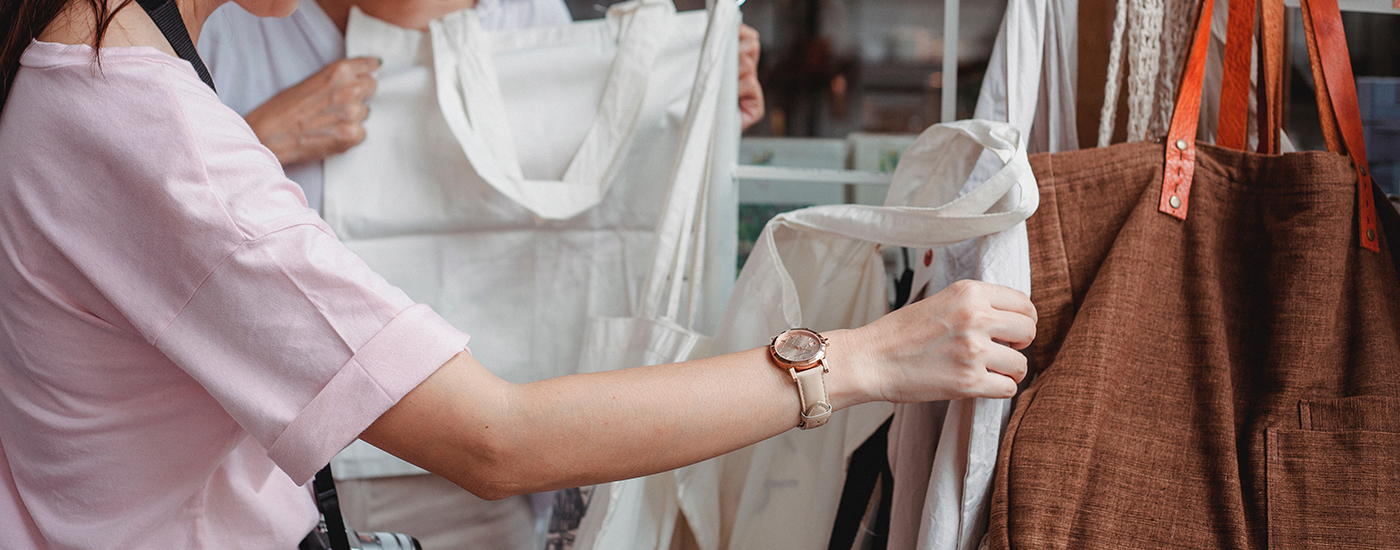
In general, sustainable processes are those that do not have a negative impact on the biosphere – minimal greenhouse gas emissions and negligible pollutants released to the environment, but it also includes ethical labor practices such as anti-slavery and fair trade.
The fashion industry has a lot of work to do to embrace sustainable principles.
Around 3 out of 5 garments produced end up either incinerated or in a landfill each year, according to a 2019 McKinsey article, Refashioning clothing’s environmental impact. Although that waste seems to lie with the consumer, the marketing of cheap, low-quality fast fashion seems to be a key cause. The production of clothes doubled between 2000 and 2014 and consumers keep items of clothing only half as long as they did 15 years ago. To become sustainable, brands need to change their focus to high-quality long-lasting garments that can be worn several times. Offering circular economy options such as the repair services offered by Belstaff and garment recycling by Rapanui could reduce disposal by a significant amount.
A recent McKinsey report, Fashion on Climate says that the fashion industry is responsible for 4% of global greenhouse gas (GHG) emissions and that under its current trend, the industry will miss global targets for GHG reduction by 50% in 2030. The use of environmentally friendly raw material and packaging, renewable energy in manufacturing plants, and sustainable transportation methods should help such issues, but the cost of the infrastructure needed to enable these changes cannot be borne by manufacturers alone, and will need to be supported by brands and retailers.

The KPMG study quoted above shows that generation Z is increasingly concerned with supporting sustainability, a trend that is likely to continue as the climate crisis worsens and awareness increases. The trend indicates brands and companies that strive for greater sustainability are likely to perform better than those who do not, even if sustainability comes at a greater price.
Brands need to embrace sustainability. But having decided to do so, how can the sustainability of a product be managed? In today’s global world, with a hundred hands involved in the process of turning a spool of cotton into a t-shirt, how can each component, each step, be guaranteed to be aligned to a brand’s policy on sustainability? A UNICEF article, child labor in the fashion supply chain, says that employers of child labor are able to get away with it because the fashion industry has complicated supply chains that result in brand owners and retailers having no idea that child labor was utilized at certain stages of the production process. Such a lack of visibility certainly should not be allowed to continue, both for the brand’s reputation and integrity as well as for the betterment of humane practices worldwide.
Using an integrated software solution to manage sustainability

Some of the more obvious solutions seem to lie in areas outside of the control of brands and retailers – such as renewable energy technology, alternate materials and stringent labor and environmental laws.
The primary solution under the control of brands and retailers is to change company strategy and policy so that every aspect of the business is sustainable. There are a host of ways in which it can be done – greener and more ethical in-house practices, a smaller number of products offered in a collection, investment in supplier infrastructure, a shift away from made-to-stock and towards made-to-order, repair, recycle and resale options for consumer’s used products.
But even if such solutions are deployed, the complexity of a fashion product’s supply chain is such that sustainability will be difficult to manage without an appropriately designed integrated software system.
In the second part of this blog post, I will discuss a way in which such a system can be utilized to manage sustainability. Please keep in mind that there are many ways to skin a fish, (or stitch a t-shirt, so to speak) and I will be referring to business processes and a system architecture that Fortude has found to be most common and most effective in the industry and that have been incorporated into Fortude’s Fashion Retail in a Box (FRIB).
Written by:
Monalee Wonnacott
Senior Consultant - Infor Services, Fortude
Related Blogs
Subscribe to our blog to know all the things we do


